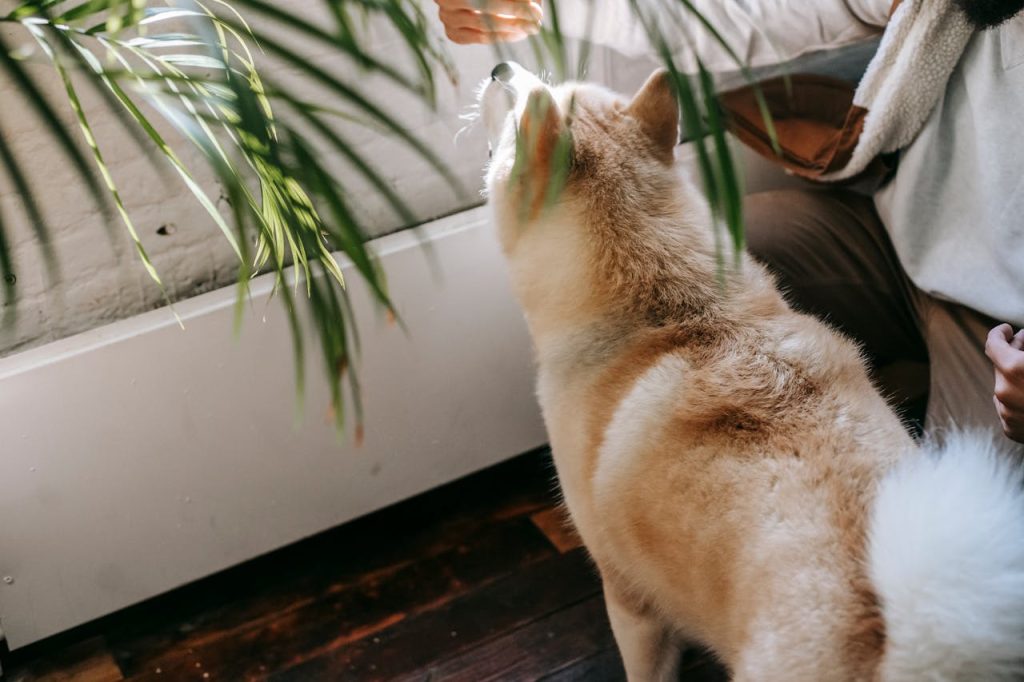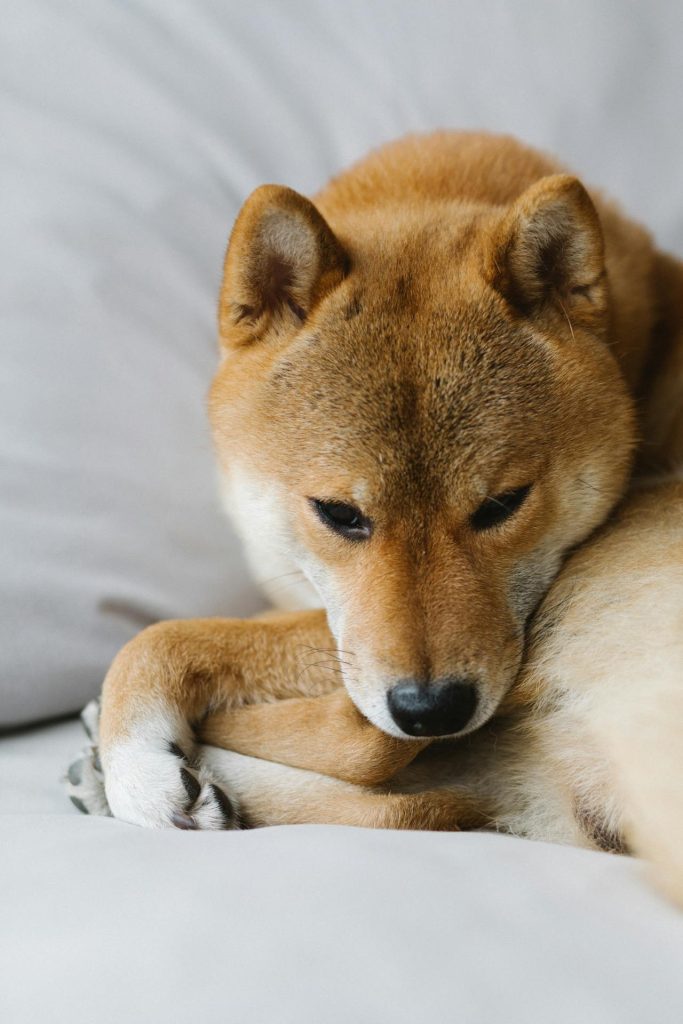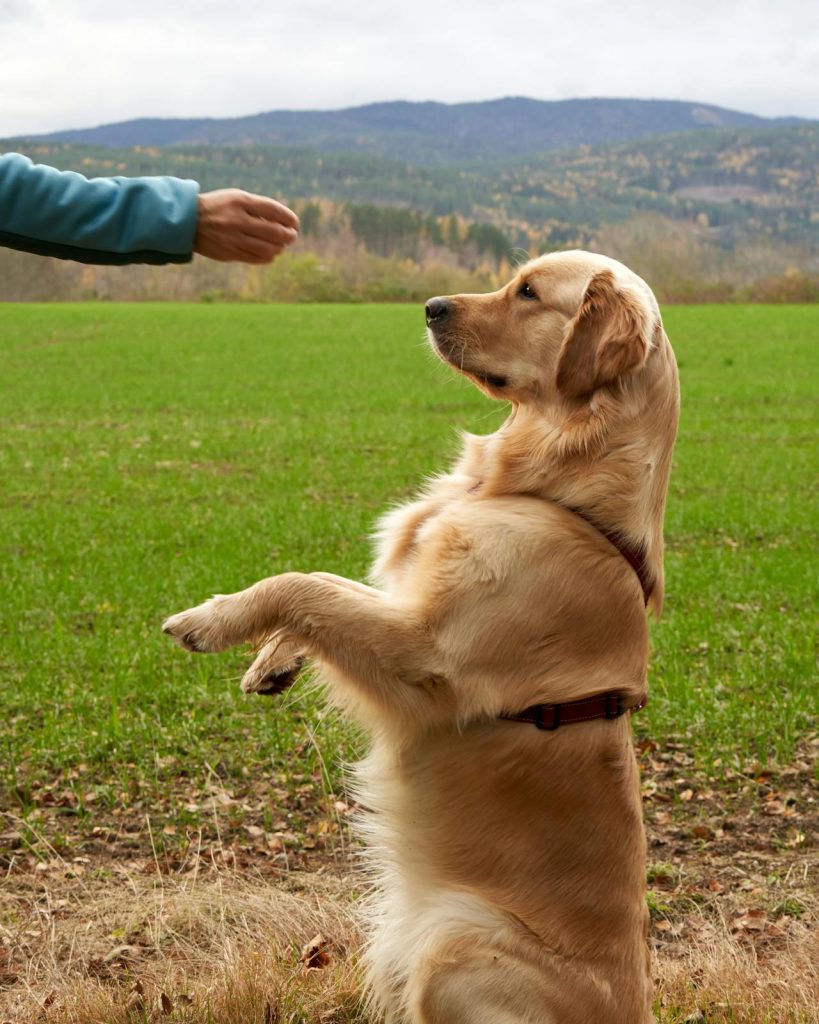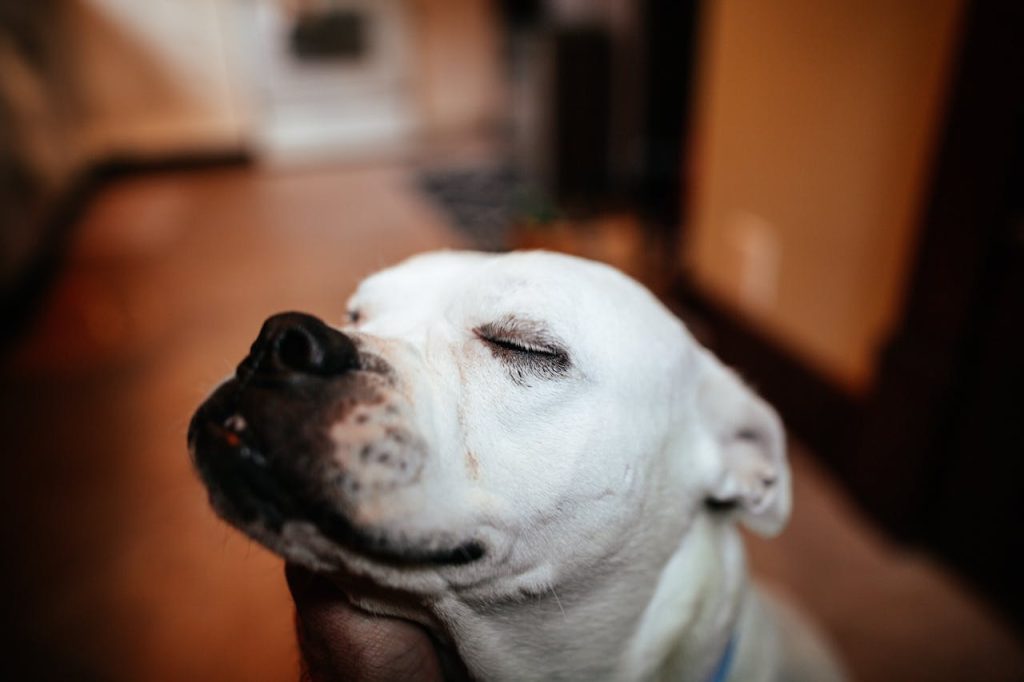
To train your dog not to sleep in your bed, set up a comfortable designated sleep area with a cozy bed, favorite blanket, and toys.
Establish a consistent bedtime routine with calming activities like gentle petting or short walks.
Use positive reinforcement by rewarding your dog with treats and praise whenever they settle in their own bed.
Gradually increase the distance of their bed from yours.
Address any nighttime anxiety with soothing routines and familiar scents.
Above all, be consistent and patient. You’ll find that these steps help your dog adjust smoothly to their new sleeping spot.
This post contains affiliate links. However all the information provided on this site are my own honest opinions. See more in Disclaimer.
Table of Contents
Key Takeaways
- Choose a consistent, comfortable sleeping area for your dog, away from high-traffic zones and drafts.
- Establish a bedtime routine with calming activities and use commands like ‘bedtime’ to reinforce the routine.
- Reward your dog immediately with treats and praise for sleeping in the designated spot to encourage desired behavior.
- Gradually move the dog’s bed further away to promote independence while preventing anxiety.
Choose a Designated Sleep Area
First, you need to choose a consistent and comfortable spot where your dog will sleep every night. This designated space is essential for establishing healthy sleeping habits.

It should be somewhere quiet, away from high-traffic areas, and free from drafts.
Make certain the spot is comfortable and inviting, providing a sense of security for your dog. Once you’ve picked the location, stick to it. Consistency is key in developing your dog’s new sleeping habits.
Moving the sleeping area around will only confuse your dog and make the training process longer. Ascertain the designated space isn’t only comfortable but also consistent regarding temperature and lighting.
Your chosen spot should also be equipped with a comfortable bed or mat that your dog can easily identify as their sleeping area. This will help them associate this particular space with rest and relaxation.
If your dog has a favorite blanket or toy, place it in this area to make it more appealing. By establishing a designated space, you’re setting the foundation for a successful shift away from your bed and into their own cozy sleeping area.
Make the New Bed Attractive
To encourage your dog to embrace their new sleeping area, you’ll need to make the new bed as appealing as possible. Start by selecting high-quality bed materials that prioritize dog comfort.
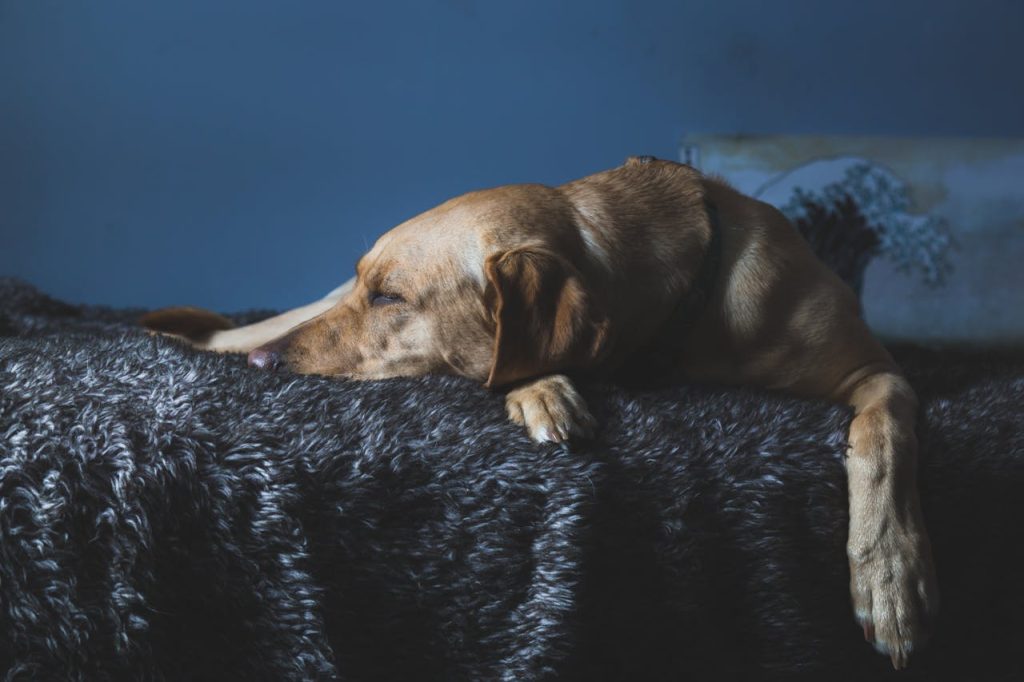
Opt for a bed with memory foam or orthopedic support, especially if your dog is older or has joint issues.
Make certain the bed is the right size, allowing your dog to stretch out comfortably without feeling restricted. Next, make the area cozy and inviting. Place the bed in a quiet, low-traffic area of your home to provide a sense of security.
Add a soft blanket or a piece of your clothing to the bed to make it smell familiar and comforting. Here’s a quick reference table to help you visualize:
| Bed Feature | Description |
|---|---|
| Bed Materials | Memory foam, orthopedic support, soft fabric coverings |
| Comfort Additions | Soft blanket, familiar scents (e.g., your clothing) |
| Placement | Quiet, low-traffic, secure area |
Establish a Bedtime Routine
Start by creating a consistent sleep environment for your dog, ensuring their bed is in a quiet, comfortable spot.
Stick to a nightly routine and reward your dog with treats or praise when they settle in their own bed.
This establishes positive associations and reinforces good behavior.
Consistent Sleep Environment
Creating a consistent sleep environment is essential, so establish a bedtime routine that signals to your dog it’s time to rest in their own bed.

Start by designating a specific area for your dog to sleep. This helps with sleep hygiene by creating a familiar, calming space.
Make sure the bed is comfortable and placed in a quiet part of the house. Begin the routine at the same time every night. Consistency is key.
Engage in calming activities such as a short walk or gentle petting, which signal to your dog that bedtime is approaching. These actions help reinforce boundary setting, making it clear that your bed is off-limits.
Turn off bright lights and reduce noise to create a serene atmosphere. This helps your dog understand that it’s time to wind down. See our post on How To Stop Dog Separation Anxiety Effectively.
Finally, lead your dog to their designated sleeping area and offer a command like ‘bedtime’ to reinforce the routine. Over time, your dog will associate these cues with sleep and naturally settle into their own bed.
Reward Good Behavior
Once your dog starts following the bedtime routine, reward their good behavior with praise and treats. This strategy reinforces behavior modification and helps create positive associations with their new sleeping arrangement.
When your dog lies in their designated bed, immediately offer verbal praise and a small treat. Make sure the reward is given as soon as the desired behavior occurs to strengthen the connection in your dog’s mind.
Establishing a consistent bedtime routine is essential. Begin by leading your dog to their bed at the same time each night, using a calm and reassuring voice.
You can also incorporate a specific phrase like ‘Go to bed‘ to signal it’s time for sleep. The repetition of this routine will help your dog understand what’s expected.
Use Positive Reinforcement
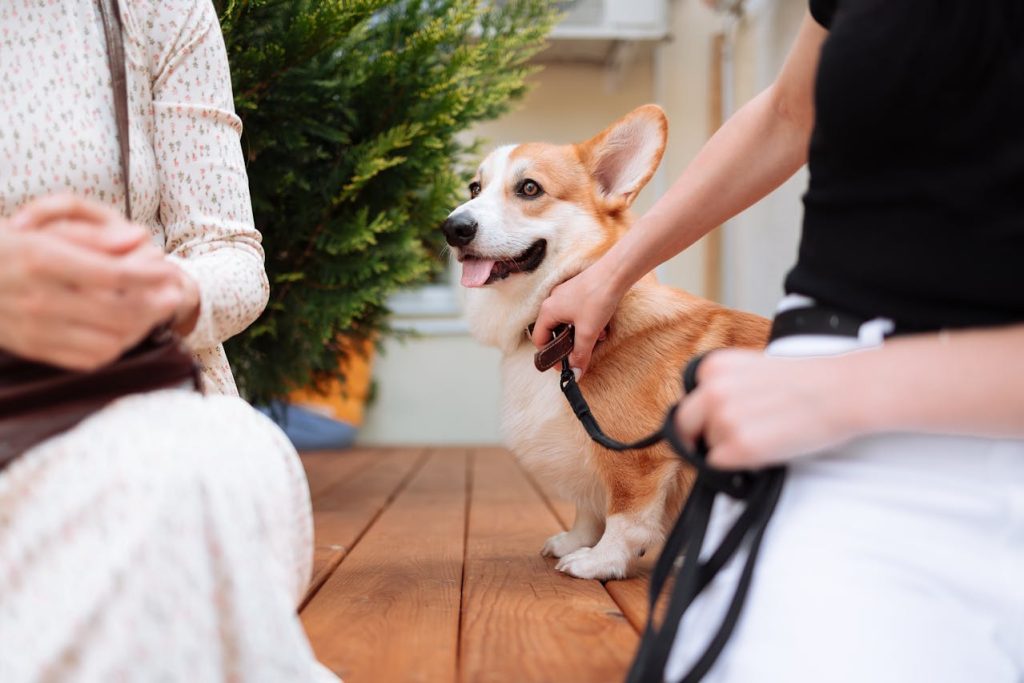
Use positive reinforcement to guarantee your dog understands where they should sleep.
Reward desired behavior consistently during training sessions.
Use treat incentives to encourage them.
This approach makes the new sleeping arrangement appealing and reinforces good habits.
Trending in Dogs:
Reward Desired Behavior
Rewarding your dog with treats and praise when they choose to sleep in their designated spot strengthens the behavior you want to encourage.
Positive reinforcement is one of the most effective reward strategies for shaping your dog’s habits. By using treats, verbal praise, or petting as behavioral reinforcement, you can guide your dog to understand and adopt the desired behavior.
Here’s a simple table to help you structure your reward strategies:
| Situation | Reward Type | Timing |
|---|---|---|
| Dog goes to designated spot | Treat | Immediately |
| Dog stays in their spot | Verbal praise | After a few minutes |
| Dog sleeps through the night | Petting | Next morning |
Make certain you’re consistent with your rewards. When your dog moves to their own bed, immediately offer a treat. If they stay there for a while, provide verbal praise.
When they successfully sleep through the night in their own spot, give them extra affection in the morning. These reward strategies guarantee your dog understands that sleeping in their designated spot is not only acceptable but also highly rewarding.
By consistently applying behavioral reinforcement, you’ll find that your dog will be more likely to adopt and maintain the desired sleeping habits.
Consistent Training Sessions
Consistency is key when it comes to training your dog not to sleep in your bed. You need to establish clear training techniques and stick to them.
Begin by setting a specific area for your dog to sleep, such as a dog bed or crate. Make this space inviting and comfortable. Consistently guide your dog to this designated sleeping spot every night.
Use positive reinforcement to encourage good sleep habits. When your dog stays in their bed, reward them with praise or affection. This reinforces that sleeping in their own space is a positive experience.
Avoid mixed signals; don’t allow your dog on your bed even for a short nap. Inconsistency can confuse your pet and hinder progress.
Keep training sessions short but frequent. Practice guiding your dog to their bed multiple times a day, especially before bedtime. Be patient and persistent.
Dogs thrive on routine, so maintaining a consistent schedule is essential. If your dog attempts to climb onto your bed, calmly but firmly redirect them to their designated spot.
Use Treat Incentives
Incorporating treat incentives will further reinforce your dog’s behavior of sleeping in their designated spot. Start by selecting high-value treat types that your dog loves. These treats should be small, tasty, and easy to chew.
Whenever your dog goes to their bed on command, immediately reward them with a treat. This positive reinforcement will make them associate their bed with something enjoyable.
Consistency is key, so make certain your training frequency is regular. Aim for multiple short sessions throughout the day rather than one long session. This keeps your dog engaged and prevents them from becoming overwhelmed.
Each time your dog successfully stays in their spot, praise them and offer a treat. Gradually increase the time they need to stay in their bed before receiving a treat.
This helps build their understanding that remaining in their spot is the desired behavior.
Over time, you can reduce the treat frequency, but continue to offer praise and occasional treats to reinforce the habit.
Gradually Increase Distance
Start by moving your dog’s bed a few inches away from your own each night to help them adjust to sleeping independently. This gradual shift is a critical part of sleep training and effective distance management.

By slowly increasing the distance, your dog will become accustomed to their new sleeping arrangement without feeling abandoned or anxious.
Begin by placing their bed close to yours, so they still feel your presence. Each night, move the bed a little farther away. Consistency is key—make certain to do this every night without making sudden, large changes.
This method helps your dog understand that their designated sleeping area is separate from yours. Reward your dog each morning for sleeping in their bed. Positive reinforcement will reinforce the behavior you want to see.
If your dog gets up and tries to join you in your bed, gently guide them back to their own space. Repeat this process patiently and consistently. Read our post on Best Camera To Watch Dogs At Home.
Over time, your dog will become more comfortable and confident sleeping on their own.
Gradual distance management guarantees a smooth change and fosters a sense of security in your pet. This leads to successful sleep training.
Address Nighttime Anxiety
Addressing nighttime anxiety is vital to help your dog feel secure and comfortable in their own bed.
First, identify your dog’s anxiety triggers. Common nighttime fears include darkness, unfamiliar noises, or separation from you.
To ease these fears, create a calming environment. Place your dog’s bed in a quiet, dimly lit area away from disruptive sounds. See also How To Calm A Restless Dog At Night.
Next, establish a soothing bedtime routine. This can involve a short walk, a calming play session, or gentle petting. Consistency in these activities signals to your dog that it’s time to wind down.
Introducing a comfort item, like a favorite toy or a piece of your clothing, can also provide reassurance. Another effective technique is to use a white noise machine or calming music to mask unsettling sounds.
Additionally, consider using anxiety-reducing products like pheromone diffusers or calming treats designed specifically for dogs. It’s important to avoid reinforcing anxious behavior.
If your dog whines or barks, resist the urge to comfort them immediately. Instead, wait for a moment of calm before offering reassurance.
This teaches your dog that calm behavior is rewarded, reducing nighttime fears over time.
Be Consistent and Patient
Consistency and patience are key to training your dog to sleep in their own bed. Start by setting clear boundaries. Decide where you want your dog to sleep and stick to that spot.
If you allow your dog to sleep in your bed occasionally, it will confuse them and undermine your efforts. When it comes to dog behavior, routines are vital.
Establish a bedtime routine that signals to your dog that it’s time to go to their own bed.
This could include a walk, followed by some quiet time, and then guiding them to their designated sleeping area. Reward them with treats and praise when they settle in their bed.
During sleep training, be prepared for setbacks. Your dog might whine or try to come back to your bed. Resist the urge to give in. Consistently guide them back to their own bed each time.
It’s important to remain calm and patient. Yelling or showing frustration can exacerbate the issue and confuse your dog.
Frequently Asked Questions

Typically, you’ll need 2-4 weeks to change your dog’s sleeping habits. Consistent training is key. Use positive reinforcement and set clear boundaries to help your dog understand their new sleeping arrangement. Stick to it.
Some dog breed tendencies are as stubborn as a mule. Breeds like Dachshunds and Terriers often show resistance to sleeping in their own bed due to their strong attachment and specific sleep behavior patterns.
Yes, crate training can help. It provides benefits like a secure space for your dog and establishes a consistent sleep routine. This makes it easier to teach them to stay off your bed.
Did you know 45% of dogs prefer routine? Allowing your dog on the bed for daytime comfort can confuse their sleep routines. Consistency is key; establish clear boundaries to help maintain their designated sleeping area.
When training your dog, don’t neglect positive reinforcement or be inconsistent. Avoid mixed signals and guarantee everyone in your household follows the same rules. Consistency in training is essential for effective behavior modification and long-term success.
Conclusion

Training your dog not to sleep in your bed requires persistence and dedication, much like teaching a child to ride a bike.
By designating a sleep area, making it appealing, setting a bedtime routine, using positive reinforcement, and gradually increasing distance, you’ll create a comfortable and secure environment for your dog.
Address nighttime anxiety and remain consistent and patient.
With these expert steps, you’ll achieve a restful night for both you and your furry friend.


